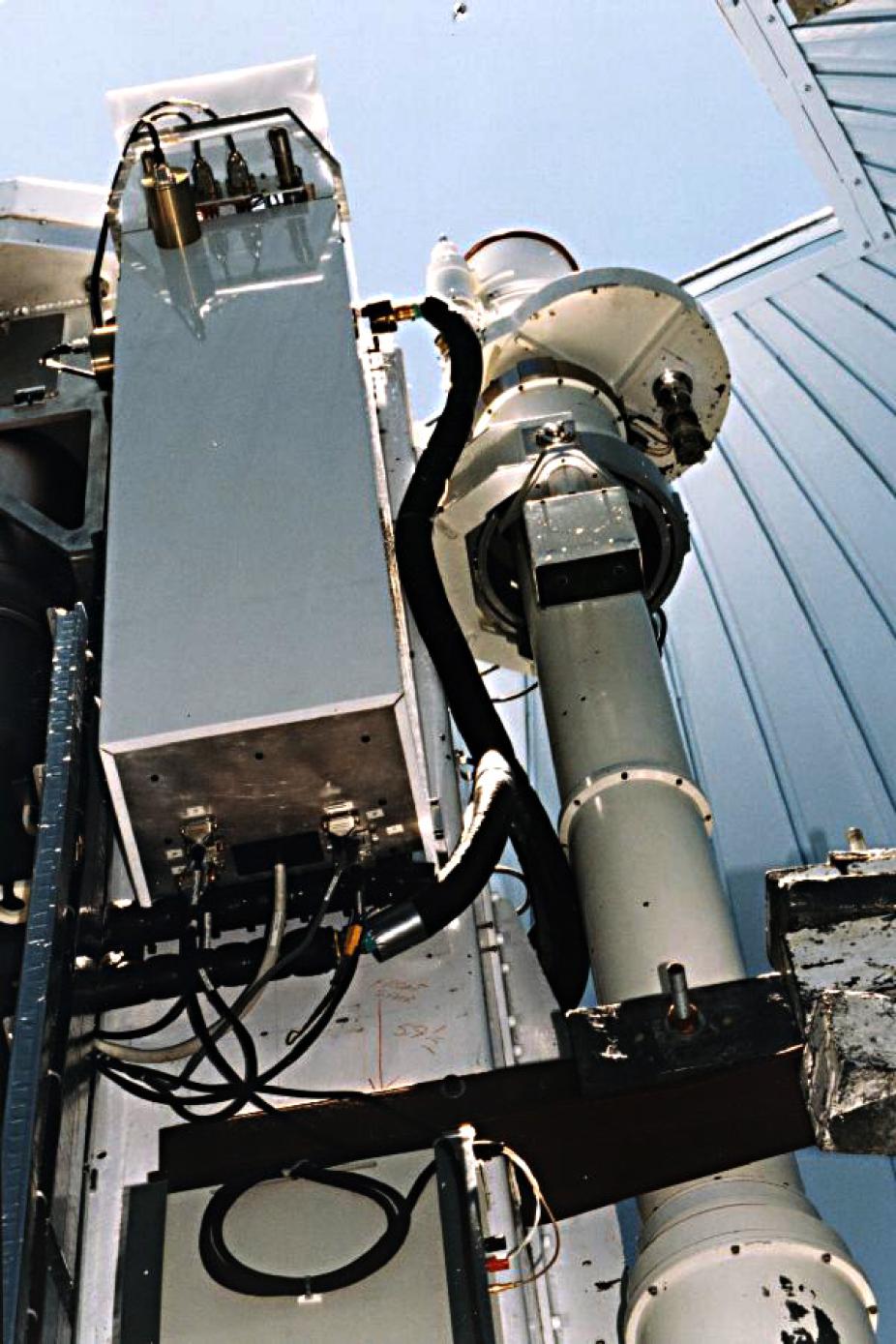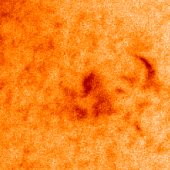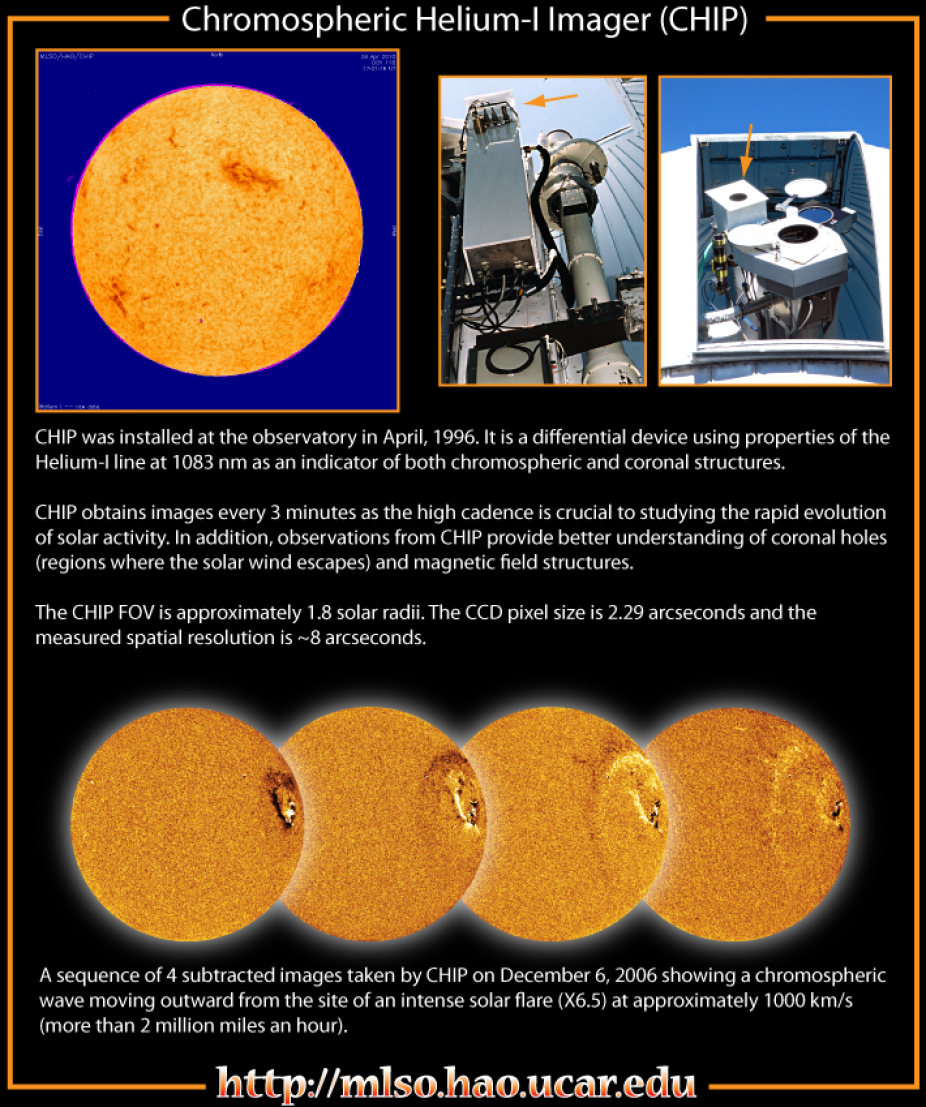CHIP Helium-I Imager

CHIP on the MLSO spar.
The Chromospheric Helium-I Imaging Photometer (CHIP) was installed at the Observatory in April 1996. CHIP is a differential device using properties of the Helium-I line at 1083 nm as an indicator of both chromospheric and coronal structures. CHIP records images of the sun at 1083 nm, as well as at a number of other nearby wavelengths (for calibration purposes). It is basically composed of a liquid crystal variable retarder (tuneable) Lyot filter connected to an IR CCD.

CHIP is unique compared with other Helium-I imagers, in that it obtains images every 3 minutes, the high cadence crucial to study the rapid evolution of CMEs. In addition, observations from CHIP should provide better understanding of coronal holes, coronal arcades, and the interaction between open and closed magnetic field structures. See animation of eruptive prominence as recorded by CHIP.
Seven line and continuum exposures are recorded within 2 seconds. The difference of line and one continuum exposures is computed every 3 minutes to produce one 1083 nm image.
The CHIP FOV is approximately 1.8 solar radii. The CCD pixel size is 2.29 arcseconds and the measured spatial resolution is ~8 arcseconds. For additional information on the tuneable filter see Kopp et al. (1996).

CHIP instrument summary slide.